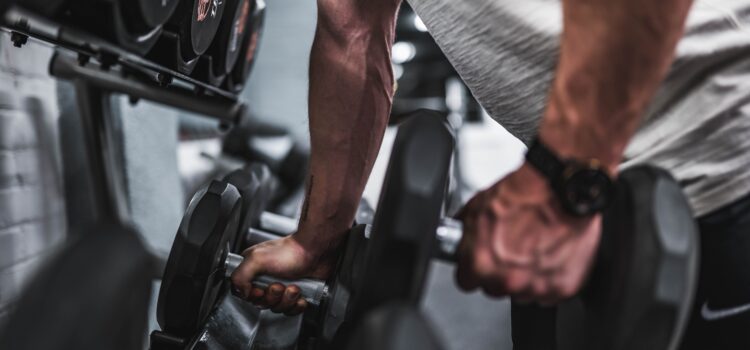

This article is an excerpt from the Shortform book guide to "Bigger Leaner Stronger" by Michael Matthews. Shortform has the world's best summaries and analyses of books you should be reading.
Like this article? Sign up for a free trial here.
How many reps and sets should you do during your workouts? Why is double progression effective?
Personal trainer Michael Matthews recommends a workout program based on progressive overload—a workout approach that maximizes muscle growth. One way of applying progressive tension overload is double progression.
Keep reading to learn about the double progression method and why it works so well.
Use Double Progression for Effective Workouts
Part of planning your workouts is to determine how many reps and sets should you do. A repetition (or “rep”) is a single movement (such as one pull-up). A set is a group of reps you do in succession (such as 10 pull-ups).
According to Matthews, you need to do nine to 12 hard sets for each major muscle group per week for optimal gains. He recommends doing nine to 12 hard sets per session (with each session focusing on one muscle group) to achieve this. For example, you might do three sets of four different pushing exercises in one workout. He suggests this because there’s an upper limit to the number of sets you can do to maximize muscle growth per workout.
(Shortform note: If you do too many reps or sets, you’re likely doing junk volume—any rep or set you do that doesn’t benefit strength or muscle gain. Junk volume not only wastes time but can delay recovery and lead to overtraining. For most people, any set beyond 10 sets for a single muscle group (or 20 for all muscle groups) per workout will likely be junk volume.)
Determine what a “hard set” is for you by using a method called double progression, which is a way of applying progressive tension overload. Progressive tension overload means that you apply an increasing amount of stress to your body by incrementally using heavier weights. This method forces your body to adapt and bear heavier loads, which boosts your muscle gains, writes Matthews.
The double progression method requires you to do exercises within a range of reps to determine when to add more weight to your exercise. If you reach the upper limit of your repetition range, you add 10 pounds.
- For primary exercises, your range should be four to six reps.
- For accessory exercises, your range should be six to eight reps.
For instance, if you can reach the upper limit of your primary exercise rep range (six), add 10 pounds. Then, continue doing sets in your rep range until you can hit the upper limit again using the heavier weight. If you can’t reach the minimum of the rep range (four) with the heavier weight, reduce the weight by five pounds and try again. If you still can’t reach the minimum, work with your original weight until you can complete the upper limit of reps for two to three sets.
(Shortform note: Double progression is effective because of how the body reacts to stress, a response called general adaptation syndrome (GAS). When you first start exercising (putting stress on your body), your body enters the alarm stage, in which it increases blood and oxygen levels, activates your muscles, and strengthens your joints. You’ll often experience soreness and fatigue after exercises during this stage. Gradually, you enter the resistance stage as your body adapts to the stress and becomes stronger through the incremental stress applied to it with double progression. If you don’t incorporate adequate rest, however, you risk entering the third stage of GAS—exhaustion—which can have negative effects like injury and fatigue.)
| The Optimal Number of Sets and Reps Depends on Your Fitness Goal You can consider using different set and rep ranges depending on your fitness goals. Let’s discuss how increasing or decreasing the number of sets and reps of an exercise can help you achieve different goals. General Fitness: If you’re trying to tone instead of bulk and are seeking to improve your overall health and fitness, experts suggest you do more reps than Matthews recommends: one to three sets of 12 to 15 reps. Endurance: If you want to improve your muscle endurance, you should increase the number of reps with lighter weights. Experts suggest you do three to four sets of at least 12 reps. Muscle Mass: If you want to enhance muscle growth and size, you should do three to six sets of six to 12 reps with moderate to heavy weight. Muscle Strength: To increase muscle strength, experts suggest you do four to six sets of fewer than six reps with heavy weight, which is similar to what Matthews recommends. |

———End of Preview———
Like what you just read? Read the rest of the world's best book summary and analysis of Michael Matthews's "Bigger Leaner Stronger" at Shortform.
Here's what you'll find in our full Bigger Leaner Stronger summary:
- How to get the physique you want without trendy diets or brutal workouts
- A simple and scientific approach to nutrition and exercise
- How to plan a workout program based on progressive overload






